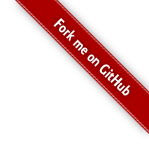web.xml
- Simple Example
- Custom mapping
- Exclude specific URLs
- Taglib Example
- Custom FileManager and FileManagerFactory implementations
- Custom configuration provider
The web.xml web application descriptor file represents the core of the Java web application, so it is appropriate
that it is also part of the core of the Struts framework. In the web.xml file you can use one of the two options:
- Configure
org.apache.struts2.dispatcher.filter.StrutsPrepareAndExecuteFilterwhich acts as a central point of initializing the Struts framework and handles all requests. - Use combination of
org.apache.struts2.dispatcher.filter.StrutsPrepareFilterandorg.apache.struts2.dispatcher.filter.StrutsExecuteFilterto support custom integration with other frameworks like Sitemesh.
Simple Example
Configuring web.xml for the framework is a matter of adding a filter and filter-mapping.
Filter Example (web.xml)
<web-app xmlns="http://xmlns.jcp.org/xml/ns/javaee"
xmlns:xsi="http://www.w3.org/2001/XMLSchema-instance"
xsi:schemaLocation="http://xmlns.jcp.org/xml/ns/javaee
http://xmlns.jcp.org/xml/ns/javaee/web-app_3_1.xsd"
version="3.1">
<filter>
<filter-name>struts2</filter-name>
<filter-class>org.apache.struts2.dispatcher.filter.StrutsPrepareAndExecuteFilter</filter-class>
</filter>
<filter-mapping>
<filter-name>struts2</filter-name>
<url-pattern>/*</url-pattern>
</filter-mapping>
<!-- ... -->
</web-app>
See SiteMesh Plugin for an example on when to use separate Filters for prepare and execution phase.
Custom mapping
The above approach is a preferred way of enabling support for Struts in your web application. Yet you can have more specific requirements and use more specific mapping like presented below:
<web-app ...>
<filter>
<filter-name>struts2</filter-name>
<filter-class>org.apache.struts2.dispatcher.filter.StrutsPrepareAndExecuteFilter</filter-class>
</filter>
<filter-mapping>
<filter-name>struts2</filter-name>
<url-pattern>*.action</url-pattern>
</filter-mapping>
</web-app>
In such case only requests ending with .action will be directed by a Servlet container to be handled by Struts filter.
This can impact serving static content provided by Struts and you will have to define additional mapping to support it:
<web-app ...>
<filter>
<filter-name>struts2</filter-name>
<filter-class>org.apache.struts2.dispatcher.filter.StrutsPrepareAndExecuteFilter</filter-class>
</filter>
<filter-mapping>
<filter-name>struts2</filter-name>
<url-pattern>*.action</url-pattern>
</filter-mapping>
<filter-mapping>
<filter-name>struts2</filter-name>
<url-pattern>/static/*</url-pattern>
</filter-mapping>
</web-app>
Exclude specific URLs
In the example above we’ve mapped the Struts 2 dispatcher to /*, so Struts has a crack at all incoming requests.
This is because Struts serves static content from its jar files, including Dojo JavaScript files (if using 2.0,
or the Dojo plugin in 2.1+) and FreeMarker templates for the Struts tags that produce HTML.
If we change the filter mapping to something else, for example /*.html, we must take this into account and extract
the content that would normally be served from the Struts jar files, or some other solution.
Since Struts 2.1.7, you are able to provide a comma separated list of patterns for which when matching against
the request URL the Filter will just pass by. This is done via the configuration option struts.action.excludePattern,
for example in your struts.xml:
<struts>
<constant name="struts.action.excludePattern" value=".*unfiltered.*,.*\.nofilter"/>
...
</struts>
Read more in Static content.
Taglib Example
Typically, configuring a taglib is neither required nor recommended. The taglib is included in struts-core.jar, and
the container will discover it automatically.
If, for some reason, a taglib configuration is needed within web.xml, extract the TLD file from the
struts-core.jarMETA-INFfolder, and add ataglibelement to theweb.xml.
<web-app ...>
<!-- ... -->
<taglib>
<taglib-uri>/s</taglib-uri>
<taglib-location>/WEB-INF/struts-tags.tld</taglib-location>
</taglib>
</web-app>
Custom FileManager and FileManagerFactory implementations
If there is a need to support an App Server’s specific file system (eg. VFS in JBoss), you can implement your own version of FileManager. But it must be registered at “the beginning” to support bootstrap of the whole framework.
To register your own FileManger you can do it with <init-param/> as below:
<filter>
<filter-name>struts2</filter-name>
<filter-class>org.apache.struts2.dispatcher.filter.StrutsPrepareAndExecuteFilter</filter-class>
<init-param>
<param-name>struts.fileManager</param-name>
<param-value>com.company.MyFileManager</param-value>
</init-param>
</filter>
You can as well register your own FileManagerFactory with <init-param/>, see example:
<filter>
<filter-name>struts2</filter-name>
<filter-class>org.apache.struts2.dispatcher.filter.StrutsPrepareAndExecuteFilter</filter-class>
<init-param>
<param-name>struts.fileManagerFactory</param-name>
<param-value>com.company.MyFileManagerFactory</param-value>
</init-param>
</filter>
Take a look on default implementations - DefaultFileManager.java and DefaultFileManagerFactory.java to understand how and why.
Custom configuration provider
It is possible to use your custom ConfigurationProvider to programmatically configure your application. To do this use
configProviders (it can be a comma-separated list of class names) <init-param/> as below:
<filter>
<filter-name>struts2</filter-name>
<filter-class>org.apache.struts2.dispatcher.filter.StrutsPrepareAndExecuteFilter</filter-class>
<init-param>
<param-name>configProviders</param-name>
<param-value>com.company.MyConfigurationProvider</param-value>
</init-param>
</filter>
See Configuration Provider & Configuration for more details.
